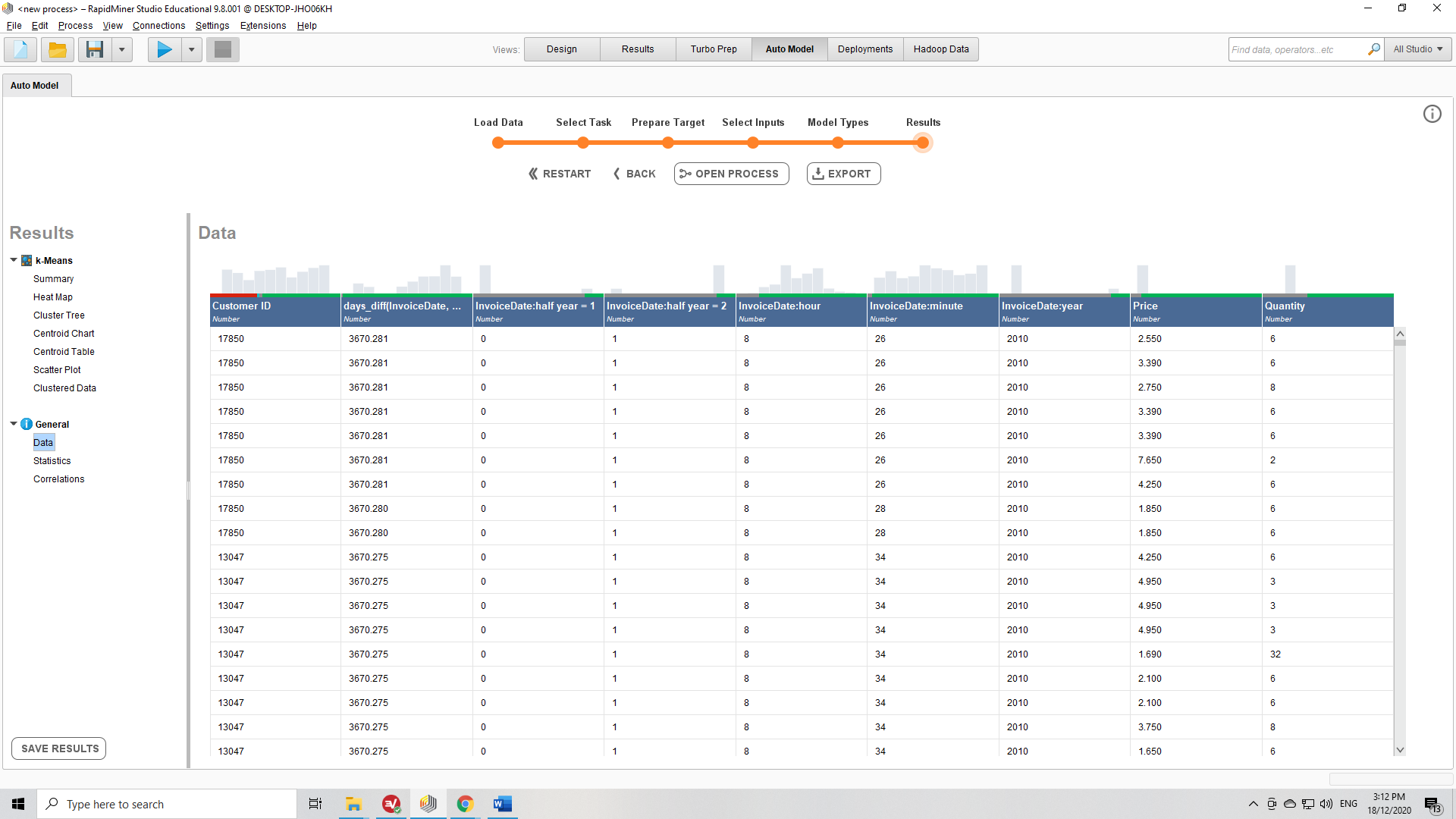The Altair Community is migrating to a new platform to provide a better experience for you. In preparation for the migration, the Altair Community is on read-only mode from October 28 - November 6, 2024. Technical support via cases will continue to work as is. For any urgent requests from Students/Faculty members, please submit the form linked here
When k = 2, 3, 4?
Below is my customer segmentation data which I ran in AutoModel.

Below are screen shots when k = 2, 3 and 4. How can I tell which k is best?
I do not have access to the elbow method or silhouette analysis.
I looked at the three Davis-Bouldin indices which measure 5.415, 3.666 and 4.121.
Wikepedia calls this an internal evaluation scheme, where the validation of how well the clustering has been done is made using quantities and features inherent to the dataset. Due to the way it is defined, as a function of the ratio of the within cluster scatter, to the between cluster separation, a lower value will mean that the clustering is better.
Should I assume the index 3.666 means k = 3 is better?
Thanks for your time.
Tony




Below are screen shots when k = 2, 3 and 4. How can I tell which k is best?
I do not have access to the elbow method or silhouette analysis.
I looked at the three Davis-Bouldin indices which measure 5.415, 3.666 and 4.121.
Wikepedia calls this an internal evaluation scheme, where the validation of how well the clustering has been done is made using quantities and features inherent to the dataset. Due to the way it is defined, as a function of the ratio of the within cluster scatter, to the between cluster separation, a lower value will mean that the clustering is better.
Should I assume the index 3.666 means k = 3 is better?
Thanks for your time.
Tony



0
Best Answer
-
 jacobcybulski
Member, University Professor Posts: 391
jacobcybulski
Member, University Professor Posts: 391  Unicorn
The AutoModel does not perform cluster optimisation for k-Means, so if you run several experiments, the best distributed cluster model is the one which gives Davis-Bouldin measure closest to zero. However, if you select x-Means clustering it will return the optimum cluster number in between the specified range between minimum and maximum.0
Unicorn
The AutoModel does not perform cluster optimisation for k-Means, so if you run several experiments, the best distributed cluster model is the one which gives Davis-Bouldin measure closest to zero. However, if you select x-Means clustering it will return the optimum cluster number in between the specified range between minimum and maximum.0

 Contributor II
Contributor II
Answers